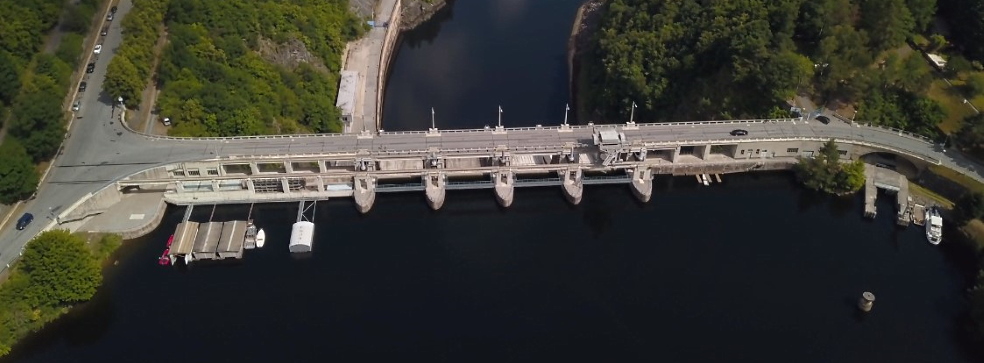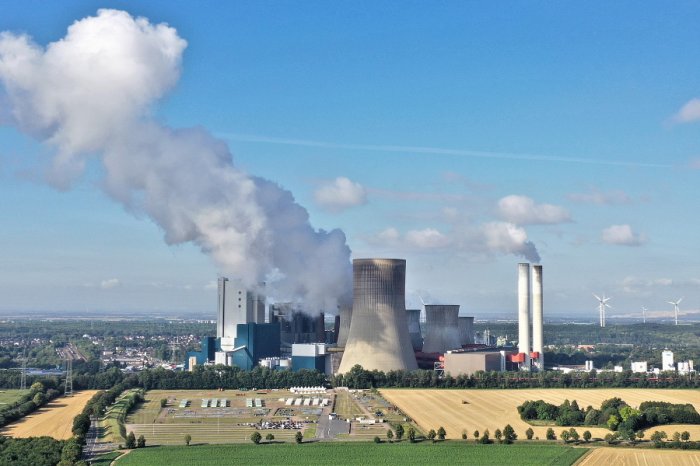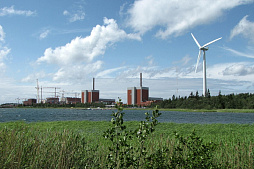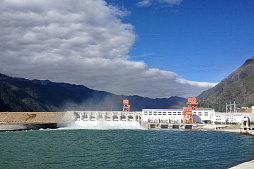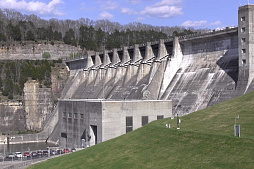To consider an application for financing, fill out the form and send it to us by e-mail along with the project brief, or contact our experts
Since the 1970s, there has been an increase in the number of projects implemented worldwide using this financial instrument, especially in the infrastructure and energy sector.
Although PF is not a fundamentally new form of financing, its importance for the world economy is steadily increasing. Optimal risk allocation and off-balance sheet investments are very important for investors.
Traditional secured long-term bank loans do not provide these benefits.
Costex Corporation DBA, a company, is ready to offer hydropower plant project financing on attractive terms.
We offer flexible contracts, guarantees, long-term debt repayment and professional support to clients when setting up an SPV and attracting investments.
Contact us to find out more.
Hydropower as an investment opportunity
The leading trend in the modern economy is the gradual energy transition from fossil fuels to renewable energy sources.While hydropower continues to be controversial among environmentalists, this renewable energy source is growing steadily.
How attractive is the construction of a hydroelectric power station as an investment opportunity?
The answer is ambiguous.
In recent decades, there has been a perception among international investors that financing hydropower is too difficult and risky. Especially when it comes to the implementation of large projects in developing countries with strong corruption, an imperfect legislative framework and an unstable political situation.
Hydropower projects require huge investments, the cost of which depends on the specific project, location, technology used and rules in the host country.
Such projects stretch over many years, requiring deep research, preparatory work, negotiations with local communities and authorities.
Each project entails certain environmental consequences that are inevitable in the construction of large reservoirs and dams. These man-made facilities have a devastating impact on local ecosystems, so states usually require the proponent of a project to carry out costly conservation measures, including the relocation of certain vulnerable species.
The construction of a hydroelectric power station has an ambiguous impact on the life of the local population. On the one hand, it is a source of cheap electricity and jobs (especially during the construction period). On the other hand, the flooding of thousands of square kilometers of agricultural land and forests for reservoirs transforms the human habitat, and sometimes even requires the resettlement of a number of villages and towns.
Finally, investment projects of this kind are considered difficult to predict, since the hydrological and geological features of the proposed construction site can only be analyzed with a certain degree of probability.
Any unexpected difficulties during the construction phase can significantly affect the final cost of the project.
The construction of other energy projects, such as thermal power plants, solar power plants and even wind farms, looks more predictable from an investment point of view. Here, the investor is faced with fewer uncertainties, initially clearly understanding the real cost of construction and having a vision of future benefits.
Meanwhile, the benefits of hydropower are not limited to renewable energy generation.
The construction of dams and a radical change in the natural landscape opens up completely new, unique opportunities for the local economy, which sometimes cannot be measured with standard corporate instruments for assessing the return on investment.
In other words, a commercial bank is not always ready to allocate sufficient funds for the implementation of an investment project, which is assessed by a financial institution solely from the economic point of view. Meanwhile, the benefits from the construction of some hydropower plants in the long term may be much higher.
This requires non-standard approaches to financing the construction of hydropower plants, including project finance instruments (PF) and public-private partnership (PPP).
The path to the success of an investment project
According to the World Bank, a significant share of public investment still falls on hydroelectric power plants, dams and other projects related to the commercial use of water resources.This creates an excessive burden on the budget, requiring a gradual transition to flexible public-private partnerships or private financing of hydropower projects.
Sources of financing for hydropower projects:
• Large private investors.
• Pension funds and other investment funds.
• State and commercial banks in the host country.
• International banks and other international financial institutions.
• Utilities and companies that need electricity for their own consumption.
• Engineering companies and equipment manufacturers.
Economists have different views on this investment opportunity.
While some experts are calling for less government intervention in such projects as in infrastructure in general, other economists are pushing for more government involvement and control over the use of natural resources.
Since the end of the 20th century, the role of private investors in the implementation of hydropower projects, including the so-called small hydropower plants, has been gradually increasing. Public financial institutions and international development banks continue to stimulate the industry with significant support and financial guarantees.
Despite the clear trend towards private investment in hydropower financing, many investors continue to view this activity as risky. Indeed, these projects require taking into account all sorts of legal, political, social, economic, environmental and other aspects that have not yet been regulated at the local and international level.
Figure: Components of success for a hydroelectric power plant investment project.
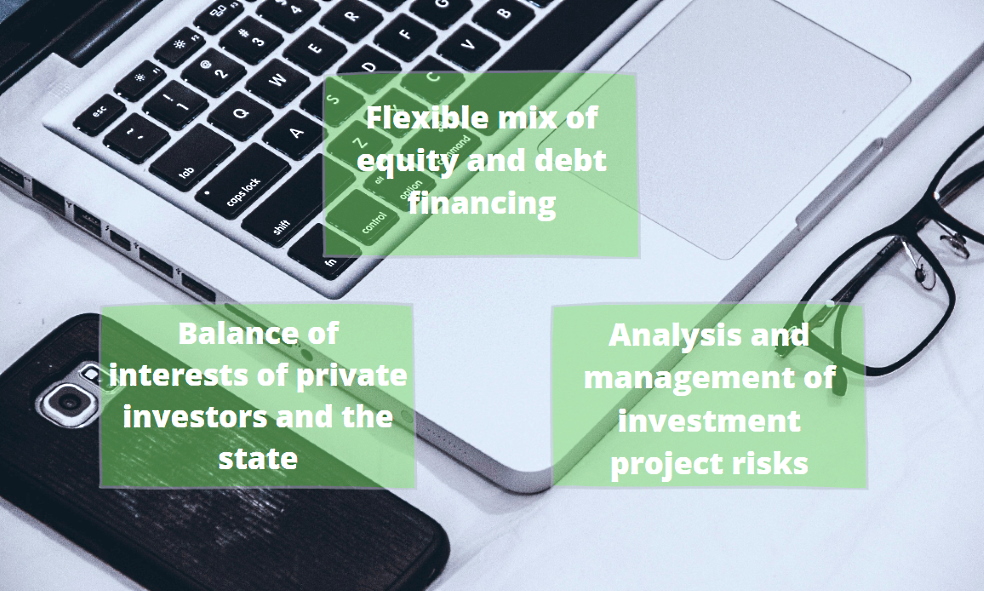
An important factor that determines the interest of business in the implementation of a hydropower project, and, consequently, the possibilities for the successful use of project finance instruments, is professional risk management.
The more risk and uncertainty the project carries, the lower the likelihood of private investors joining it.
Concessions for the construction of hydroelectric power plants
In a new public-private partnership project, a private company is usually responsible for the engineering design, construction, financing and operation of the hydropower plant.This company offers related services, assuming traditional government responsibilities and adhering to strict quality criteria.
Hydropower plant financing under PPPs is usually controlled by public financial institutions.
States also provide the formal guarantees required to raise significant funds.
An important element of cooperation between the state and companies that initiate energy projects is payment for the natural resources. Different countries use different approaches to calculating these payments, to which taxes, license fees, concession fees and other costs are added.
Expanding private capital participation begins with concession agreements for the construction of hydropower plants, which allow local and foreign companies to build, upgrade, expand and operate these facilities, generating a stable income from the use of natural resources. The terms of the concession differ significantly depending on the country that implements the project. In some schemes, such as the BOO contract, a private investor becomes the owner of the facility under construction.
However, the BOT and BOOT models remain traditionally popular, which provide for the preservation of ownership of the hydroelectric power plant by the state with mutually beneficial cooperation with investors.
Below is a brief description of the most common hydropower project delivery methods:
• BOT (build, operate and transfer). This contract specifies that a special purpose vehicle (SPV) must build, operate, and then transfer the assets or all components of the project to the government. The private company is responsible for doing the work at its own risk and will ultimately charge a fee for its direct use. In a BOT contract, upon expiration of the amortization period, the asset is immediately transferred to the public sector.
• BOO (build, own, operate). This type of agreement stipulates that a private provider must create and operate assets in order to provide a service. The state will only regulate and control the provision of public services, since the ownership of the asset belongs to the investor company. BOO is common in transport concessions. This system allows the private company implementing the project to charge fees directly from the end users of the service.
• BOOT (build, own, operate and transfer). In BOOT projects, hydropower plants are entirely built and operated by a private company. They are owned by a private consortium until the end of the contract, after which they must be transferred to the state. The private provider may charge a fee for the supplied electricity during the specified period.
The discussed PPP schemes leverage the initiative, economic potential and expertise of the private sector to improve services and accelerate the implementation of capital-intensive strategic hydropower projects.
By working to improve the quality and accessibility standards of each project, public-private partnerships contribute to the development and economic and social growth of the host country.
Cash flows from hydropower projects
Financing of large hydropower projects can be carried out against future cash flows, that is, the income that the energy facility should generate in the long term. In this regard, the formation of these flows is especially interesting.Cash flow guarantee is extremely important for investors.
Can you guarantee that the consumer will buy energy for an extended period (for example, 15 or even 20 years)?
This requires detailed study.
The cash flow of the project is formed due to the payment of consumers for electricity. In addition, companies can receive multi-million dollar subsidies from the national government and government agencies. These subsidies can be aimed at accelerating the commissioning of the facility, reducing the cost of electricity for the population and strategic consumers, minimizing environmental damage as a result of the construction and operation of hydroelectric power plants, and other goals.
While the main source of income for investors is the sale of electricity, in some cases potential non-energy revenues are also used to raise finance.
For example, modern pumped storage power plants can participate in maintaining the stability of the power grid by compensating for power fluctuations associated with the massive introduction of renewable energy sources. Operators and some specific consumers who need a stable and reliable power supply are currently most interested in such services.
The stabilization of the power grid is of greater importance for large hydroelectric power plants, while small HPPs mainly earn money from the sale of electricity to small consumers and ensure their autonomy.
Although the list of sources of additional revenue can be significant, in most emerging markets these services are difficult to provide, so the bulk of the cash flow continues to come from the sale of electricity to consumers. In any case, the construction of a hydropower plant today represents a promising investment opportunity for energy companies.
The role of project finance in the construction of hydroelectric power plants
Project finance (PF) is an approach widely used in large energy and infrastructure projects.Financial experts offer different definitions of PF, although there is no consensus in the scientific literature on the role of certain characteristics as distinguishing features of PF.
Some of the key features of project finance include:
• Using an independent company (SPV) that directly manages the investment project.
• Sponsors and holders of SPV shares, among other things, may take an active part in the implementation of an investment project, for example, as contractors or subcontractors.
• Project participants such as contractors, managers, lenders, suppliers, electricity users, and often government agencies create a system of contractual relations aimed at identifying and managing risks based on the competencies, resources and experience of the parties.
• A special purpose vehicle implementing an investment project uses high financial leverage, while lenders have limited opportunities to make financial claims to sponsors in the event of a project failure (this is the so-called project finance with limited recourse or no recourse).
Basically, this is a financing method in which the source of the SPV's debt is mainly the cash flows generated by the future project.
This is the key difference between a PF and a bank loan, which requires certain collateral from the borrowing company and significantly limits the latter in its daily activities.
Benefits of project finance
Since the PF is mainly used in areas of strategic importance for the state, in many cases investors join the project only after obtaining licenses and with the participation of government agencies.The latter should control the investment process and represent the interests of the government during the construction and operation of the facility.
A private investor will start a project if the expected income significantly exceeds the cost of the capital involved. By entrusting the implementation of a hydropower project to a private company, the state benefits from the rapid attraction of large investments, which makes the construction of a hydropower plant independent of the financial condition of the state.
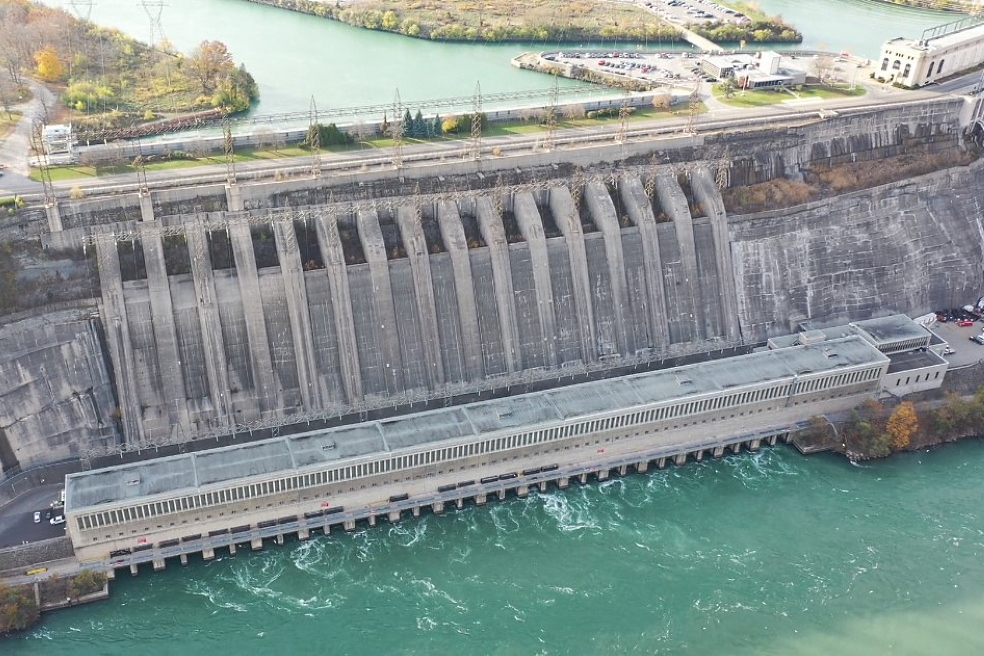
It is important to note the role of professional knowledge, experience and management methods used by private companies.
The governments of developing countries are not always able to manage projects of this kind at a sufficiently high level, therefore, attracting more competent partners from the private sector has a beneficial effect on the prospects for an investment project.
Limited recourse project finance is a unique mechanism that allows companies to raise significant funds without using their own assets as collateral for debt.
Instead, the investment project acts as collateral, and the borrowed funds are provided through a specially created company (SPV). Since the latter is considered independent of the initiator, the borrowed funds formally do not put pressure on the balance of the initiating company.
Therefore, PF is also called off-balance sheet financing.
In case of violation of the terms of the agreement and the withdrawal of the initiating company from the project (for example, as a result of bankruptcy), the lender can continue construction.
However, the obvious drawback of this scheme is its complexity and the need to conclude a complex of multilateral contractual relations to ensure the viability of the hydropower project in any possible business development scenarios.
The source of debt repayment under the PF is the future income from the sale of electricity.
On the one hand, project finance should provide the investments required for the construction of the facility, with flexible terms and a debt repayment schedule that is most consistent with the future financial flows of the project.
On the other hand, these conditions should guarantee to the lender the completion of the project and the repayment of the debt, which may amount to billions of euros.
It looks like a daunting task that requires professional planning and supervision. Since the debt maturity can be delayed for 15 years or even more, the use of PF instruments is always associated with numerous internal and external risks, such as the risk of bankruptcy, the risk of changes in the demand and cost of electricity, currency fluctuations, etc.
Costex Corporation DBA offers financing for large energy projects around the world.
We are ready to provide comprehensive professional assistance to your business for the construction of hydropower plants in Europe, USA, Latin America, East Asia, Africa and the Middle East.
Alternative ways to finance hydropower projects
Financing of hydropower, including the construction of hydropower plants, is usually carried out through combined schemes and instruments with the participation of several sources (investment funds, banks, large private investors).Nevertheless, the financing structure should be selected individually, based on the specifics of a particular project and the conditions for its implementation in a particular country.
Project finance (PF) in its various forms is considered the most appropriate for such investments.
This tool was discussed in detail in the previous section of the article.
In general, financing of any investment project can be classified into equity financing and debt financing. This classification distinguishes long-term loans, subsidies, issuing shares, and so on.
In the context of the differences between public and private financing, it should be noted that most large hydropower projects are financed simultaneously from several sources. On the one hand, private lenders can provide significant funds with a high interest rate against the collateral of the borrower's assets or the future cash flows of the project.
On the other hand, the state can finance the construction of hydroelectric power plants on more favorable terms, but in order to receive such financing, an investment project must meet a number of strict conditions.
Equity financing
Equity financing, in essence, is raising capital in exchange for a certain part of a company or project by issuing shares.Unlike traditional lending, business gives creditors the right to participate in the company's activities and receive dividends. Consequently, this method of financing entails a decrease in the borrower's share in the business.
Equity financing of hydropower projects involves the transfer of a certain share of the business and future cash flows to the lender. Moreover, this may entail a loss of control over the project, which is unacceptable for energy companies or large energy consumers in the context of a long-term development strategy.
Shareholders who get the right to participate in decision making make the company more vulnerable to external influences, including from competitors.
There are two large groups of hydropower equity investors:
• Financial investors. Players such as private investors and mutual funds usually do not specialize in a particular industry. These cautious investors are always looking for financial opportunities across sectors without being experts in hydropower and not being actively involved in running the business.
• Strategic investors. Energy companies and sectoral investment funds, which have significant experience in hydropower, invest large sums in the construction of hydropower plants and are actively involved in the implementation of the project.
Investors who buy shares in energy companies carry more risk than regular lenders. However, shareholders expect higher returns, which, among other things, depend on the type of shares purchased. It is estimated that the dividend yield on hydroelectric shares can range from 5% per annum to over 25% per annum under favorable circumstances.
As for the risk of equity investors, if the investment project fails, no dividends are paid to shareholders.
Despite some risk, the high expected dividend yield continues to attract private and even public investors interested in this sector.

Long-term loans from commercial banks
Debt financing is the most widespread way to raise capital to run an existing business.In this case, an individual, company, bank or other legal entity provides money for the business, and the borrower is obliged to pay the debt plus the agreed interest.
Debt financing provides existing owners with the capital they need while maintaining full ownership and control of the business.
Debt financing for the construction of hydropower plants includes long-term loans from commercial banks, mezzanine financing, bond issues, grant financing and other instruments. Unlike equity financing, lenders do not have the right to manage the business and make strategic decisions, nor do they share risks and dividends.
However, standard terms and conditions of loan agreements can give lenders some control over the assets of the borrower.
The advantage of debt financing over equity financing is undoubtedly the fact that in this case the entrepreneur remains independent.
He does not need to ask anyone shareholders if he wants to change, for example, his operating strategy.
Also, the owner does not lose his share of the business.
The procedure for obtaining debt financing, such as a bank loan, is relatively simple. To obtain debt financing, it is enough to provide the bank or other credit institution with a package of standard documents related to the project and confirming the solvency of the borrowing company. It is more difficult for young companies to do this due to the lack of collateral.
Despite all the restrictions, bank loans are often the best option for financing capital-intensive investment projects for which it is difficult to find interested investors. The help of professional financial advisors and financial teams increases the likelihood of obtaining borrowed funds on more favorable terms, therefore, contacting international and national financial institutions requires the support of independent experts.
Sometimes the loan is used for the financial leverage to increase the return on investment. In certain cases, it helps to raise additional working capital or refinance the company's previous debt.
The peculiarity of bank financing of hydropower projects is that a significant share of credit funds comes from reputable international institutions such as the European Bank for Reconstruction and Development, the European Investment Bank, the Asian Infrastructure Investment Bank, the Inter-American Development Bank, the African Development Bank and others.
Also, large loans can be provided by international development agencies, state banks, investment funds and ECAs.
But most often, companies have to cooperate with commercial banks such as Santander, French BNP Paribas, as well as JPMorgan Chase or HSBC Holdings.
Public private partnership
PPP attracts co-financing from both public and private sources and distributes responsibilities, risks and benefits among these participants.This approach is considered one of the most diverse in terms of the tools used and the involvement of the state and private investors in a particular project.
The state may be interested in such cooperation due to the chronic budget deficit, which requires the attraction of large private investments in energy projects that are characterized by high capital intensity and a long payback period. For private investors, PPP opens up new opportunities, helping the company to strengthen its position in the highly promising energy sector, previously considered the "fiefdom" of the government.
As mentioned above, the existing diverse partnership schemes can provide the most effective allocation of responsibility, risk and ownership for each specific project. In some cases, the state may remain the owner of the hydroelectric power plant under construction, transferring broad rights to operate it to a private company.
The role of governments is important in the context of formal guarantees and risk insurance, as government regulatory capacity remains disproportionately large compared to private energy companies.
This mutually beneficial cooperation allows the construction of hydropower facilities of strategic importance, even if the project is considered risky.
In addition to the obvious benefits for business and society, the construction of hydropower plants under public-private partnerships is associated with some risks. In particular, government intervention in a project is sometimes accompanied by corrupt practices, various unplanned delays and funding cuts, and a decrease in overall efficiency. On the other hand, private investors are mainly interested in the commercial component of the project, so the state must monitor compliance with social obligations, environmental standards and other non-commercial aspects of the project.
Unfortunately, the world's poorest countries do not have sufficient resources and experience to implement large energy projects through public-private partnerships.
In these cases, the role of international organizations increases, which help governments in the development of the industry and provide the necessary funding for strategic projects.
If you are planning to build a large hydroelectric power plant, please contact our representatives.
Costex Corporation DBA offers financing hydropower projects and other services.
Thanks to close cooperation with leading equipment suppliers and engineering companies, we are also ready to act as your general contractor for the construction of energy facilities under the EPC contract.



